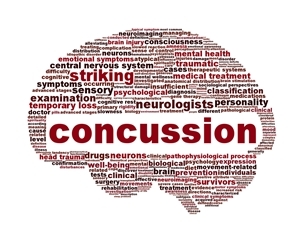Many medical staffing professionals see student athletes ages 15 to 18 on a daily basis. While most sports injuries revolve around hurt limbs such as broken ankles or ACL tears, football, hockey and other contact sports have been shown to cause concussions that put the brain at risk. Perhaps strikingly, the rate of concussions in U.S. high school athletes more than doubled between 2005 and 2012, according to new research published in The American Journal of Sports Medicine.
Experts said that the trend likely reflects a heightened awareness and more legislation focused on concussions in student athletes, rather than more danger in sports.
Immediately after the minor trauma of a concussion, symptoms may include headaches, slower reaction times and memory loss as a result of loss of consciousness. Later symptoms can evolve into irritability and sleep disturbances. While concussions are labeled as a “minor” injury, all have the potential for serious and long-lasting symptoms.
For the observational study, investigators examined data from a sample of 100 U.S. high schools that had at least one certified athletic trainer on staff. They found that from 2005 to 2012, more than 4,000 concussions occurred in seven sports, including football, wrestling, volleyball, basketball, baseball, soccer and softball. Of these, five showed increases that were statistically substantial, namely, football, boys’ basketball, boys’ baseball, boys’ wrestling and girls’ softball, according to the study. Unsurprisingly, high school football had the highest rates of concussion.
The concussion rate jumped from 0.23 to 0.51 concussions for every 1,000 athlete exposures. An athletic exposure is defined as a single athlete participating in one competition.
Thanks to increased media coverage on the dangers of the head trauma and position statements about concussion management from organizations such as National Athletic Trainers’ Association, there has been the uptick in concussion awareness. All things considered, this is actually good news, lead researcher Dr. Joseph Rosenthal told HealthDay.
What happens to the brain during a concussion?
About 1.6 to 3.8 million sports-related concussions are reported each year, not counting those that aren’t brought to the attention of health care professionals. A big problem is that since not every traumatic injury to the head results in a loss of consciousness, some people may get concussed without even realizing it.
When the head sustains a substantial hit, the force dissipates in the skull, causing the brain to move inside. It is this jolting acceleration and deceleration of the brain against the skull that can interrupt the brain’s function.
Once a patient suffers a concussion, he or she is exponentially more likely to experience one again. Notably, children who are more sensitive to the effects of concussions due to past injuries may require longer periods of rest before returning to the activity or sport. Yet most people, with the proper rest and health attention from travel nurse professionals, recover.
“About 80 percent of people improve from rest after eight to 10 days,” Dr. Willem Meeuwisse, leader of the University of Calgary’s Brain Injury Initiative, told TIME. “For those who are not better in 10 days, they need a more thorough assessment and maybe therapy for neck problems or balance.”
All 50 states and Washington, D.C., have some type of law aimed at protecting young athletes from returning to play too soon after a concussion. As a medical staffing professional, you should encourage patients to wear a helmet that fits properly, which can reduce the effects of head injuries.

